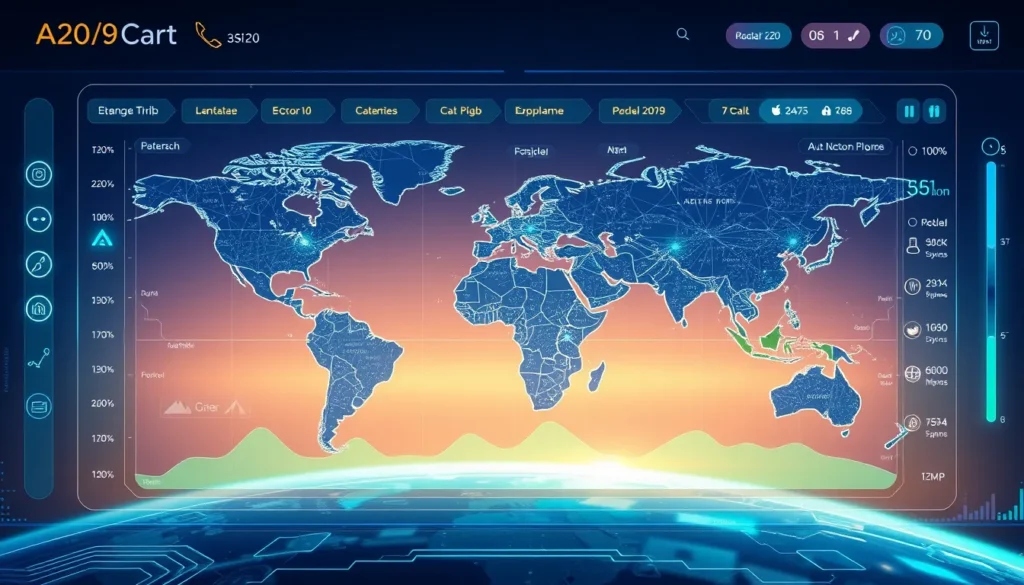Now Reading: Model Context Protocol: Revolutionizing AI Integration
-
01
Model Context Protocol: Revolutionizing AI Integration
Model Context Protocol: Revolutionizing AI Integration

Model Context Protocol: Revolutionizing AI Integration
The landscape of artificial intelligence is continually evolving, and the introduction of the Model Context Protocol marks a significant breakthrough in AI integration. This innovative protocol is designed to streamline communication across disparate AI modules, ultimately enhancing context-aware systems while paving the way for more efficient AI integration.
Understanding the Role of Model Context Protocol in AI
The Model Context Protocol emerges as a novel integration layer developed to bridge gaps between varied AI systems. It offers a unified framework that ensures smoother, more accurate communication between different AI modules. This unified approach is essential for addressing the challenges inherent in managing context across multiple systems and algorithms.
Key benefits of the Model Context Protocol include:
- Enhanced communication between AI modules
- Streamlined transfer of contextual data
- Better performance in context-aware applications
By addressing these critical areas, the protocol not only expedites the decision-making process but also improves the overall reliability of AI systems in handling complex tasks such as natural language processing, data analytics, and real-time decision making.
The Imperative of AI Integration and Context-Aware Systems
In today’s tech environment, AI integration plays a crucial role in solving complex problems. One of the primary challenges has been the lack of standardized communication protocols. With Model Context Protocol leading the way, the industry sees an opportunity to reduce inefficiencies and support a more coherent method for sharing context across different AI components. This integration is crucial for:
- Minimizing development time by using a unified standard.
- Enhancing performance through improved context accuracy.
- Driving innovation in sectors ranging from healthcare to autonomous systems.
Enhancing Communication Between AI Modules
Model Context Protocol is engineered to overcome the traditional hurdles associated with separate AI modules that function independently. By providing a communication bridge, the protocol ensures that valuable contextual information is carried across various components. This feature is critical in complex systems where reliability and responsiveness are paramount. Developers now have the following advantages:
- Consistent data flow across systems
- Reduced overhead due to simplified integration
- Improved system adaptability in dynamic environments
For applications like virtual assistants, where real-time interactivity is essential, integrating AI modules with this protocol can lead to dramatic improvements in user experience. Leading organizations and tech experts are already exploring its potential, and early case studies have reported noteworthy improvements in system responsiveness.
Addressing Long-Tail Queries: How Model Context Protocol Enhances AI Communication
- The protocol offers a standardized method for transferring context that minimizes misinterpretation between AI systems.
- Its architecture supports iterative development, allowing for continuous improvements and customization.
- By reducing integration complexity, it supports faster deployment of new AI solutions.
These discussion points are essential for stakeholders considering the protocol as a long-term solution for their integration needs. The ability to communicate contextual information accurately can determine the success of AI applications in domains like healthcare, finance, and beyond.
Challenges and Future Directions in AI Integration
Despite the promising attributes of the Model Context Protocol, it is important to recognize the challenges that still exist. Currently, the protocol has not achieved full standardization and remains under extensive review. Concerns arise regarding:
- The potential emergence of incompatible protocol versions if proper guidelines are not established.
- The hesitancy among industry players to fully adopt a protocol that is still under evaluation.
- Issues related to security and robustness that need thorough testing before widespread adoption.
Experts call for collaborative efforts among major tech companies, research institutions, and standardization bodies to address these challenges. By setting clear guidelines and establishing a universally accepted standard, the full potential of the Model Context Protocol can be realized.
The Road Ahead for AI Integration
The future of AI depends on innovations that can balance rapid technological advances with systematic, standardized integration practices. The Model Context Protocol represents a critical step in this journey. As more organizations explore AI integration, the demand for context-aware systems will continue to grow. This protocol lays the groundwork for:
- Enhanced data coherence across AI systems
- Scalable AI solutions for future technologies
- More secure and reliable AI communications
For further reading on groundbreaking AI advancements, consider visiting the OpenAI official website and staying up-to-date with the latest trends in AI integration.
Conclusion
The Model Context Protocol is more than just a new development—it is a transformative approach to how AI modules communicate and collaborate. With its potential to standardize and simplify AI integration, this protocol stands at the forefront of enabling context-aware AI systems. While challenges remain, the ongoing efforts to refine and adopt this integration layer underscore the importance of balancing innovation with standardization. As the field of artificial intelligence continues to mature, the Model Context Protocol is poised to play a pivotal role in shaping the future of interconnected AI systems.
By embracing the Model Context Protocol, developers and businesses alike can look forward to a more unified, efficient, and adaptive AI ecosystem that meets the complex demands of today’s technological landscape.

























